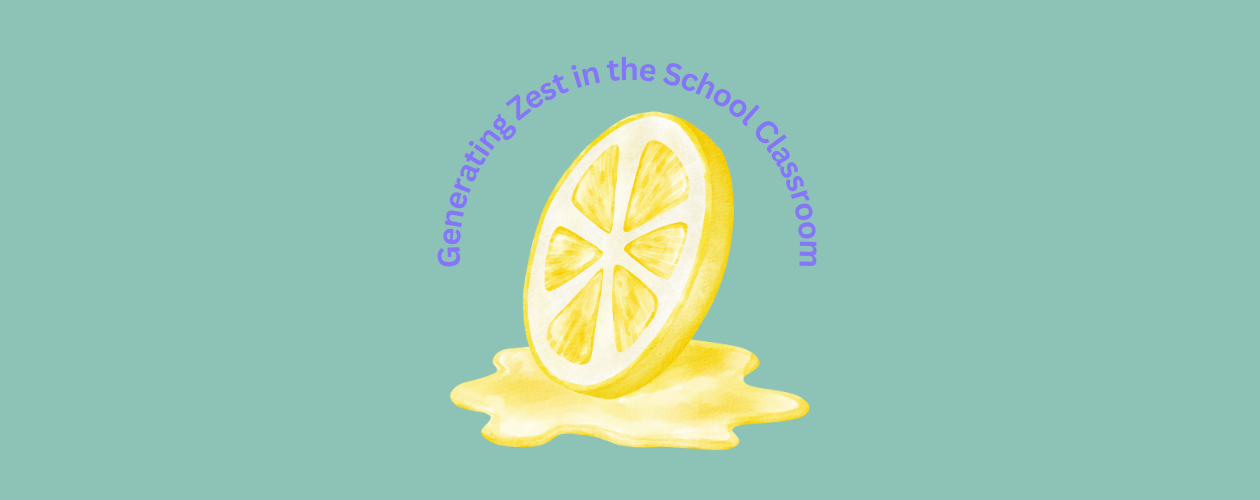Understanding Zest in Education
Zest is a term we often understand intuitively, yet its precise definition can be elusive due to its multifaceted nature. Niemec and McGrath describe zest as approaching life with excitement and energy.
Seligman and Peterson first classified zest as a character strength under the virtue of courage in their influential work, Character Strengths and Virtues. Zest is now considered a key element in Seligman's PERMA model of well-being, which includes Positive Emotions, Engagement, Relationships, Meaning, and Accomplishment .
The Impact of Zest on Students and Teachers
A zestful classroom environment significantly enhances both teaching and learning. Teachers benefit from energetic and enthusiastic students, making lessons more interactive and dynamic. Students, in turn, thrive with zestful teachers, making learning more engaging and personalized. Carol Dweck associates zest with the growth mindset, essential for fostering a positive learning environment .
Identifying and Blocking Zest Killers
Blocking zest inhibitors is crucial for creating a vibrant classroom. According to Niemec, generating zest often involves removing barriers that hinder potential . Common zest killers in educational settings include:
1. Lack of Understanding: Students lose enthusiasm when they struggle to grasp material. Remedial work and recycling exercises can help rebuild confidence.
2. Negative Emotions: External factors or toxic classroom environments can diminish student participation. Regular progress checks can help mitigate these feelings by showcasing academic development.
3. Fatigue: Busy schedules can exhaust students. Introducing breaks or lighter activities can help them recharge.
4. Information Overload: High curriculum demands can overwhelm students. Breaking information into manageable chunks and slowing down the pace can prevent overload.
5. Competition for Attention: Distractions from various stimuli can drain students' energy. Helping students focus and reducing distractions can maintain their enthusiasm.
Enhancing Energy to Foster Zest
Loehr and Schwartz emphasize that a lack of achievement often stems from insufficient energy rather than insufficient time. They identify four energy sources: Physical, Spiritual, Emotional, and Mental . Teachers can use the concept of "periodization," managing work-rest ratios to sustain high energy levels in the classroom.
Combatting Negative Thoughts
"Junk Thoughts," as defined by Anderson, include over-generalizing, catastrophizing, copping out, and demanding behavior. Addressing these negative thought patterns is crucial for maintaining zest. Encouraging collaboration and sharing within the classroom can significantly reduce anxiety and stress, fostering a supportive and enthusiastic learning environment .
Inspiring Zest Through Stories
Carol Dweck suggests that motivational stories can boost students' confidence and promote a growth mindset. Sharing stories of innovators like Picasso and Frost, who struggled with and overcame creative challenges, can inspire students to persevere and maintain their zest for learning.
Conclusion
Zest is a vital character strength that enhances happiness and a love for learning. By understanding and mitigating zest killers, promoting energy sustainability, and inspiring students through stories, teachers can create a thriving, enthusiastic classroom environment. This approach not only fosters academic success but also cultivates a lifelong love of learning in students.
References & Further Reading
Peterson, C., & Seligman, M. E. P. (2004). Character Strengths and Virtues: A Handbook and Classification. New York, NY: Oxford University Press/Washington, DC: American Psychological Association.
Niemec, M. (2018). Character Strengths Interventions: A Field Guide for Practitioners. Czech Republic: Hogrefe Publishing.
Niemec, M., & McGrath, E. (2019). The Power of Character Strengths. USA: VIA Institute of Character.
Dweck, C. S. (2006). Mindset: The New Psychology of Success. Random House.
Galenson, D. (2006). Old Masters and Young Geniuses: The Two Life Cycles of Artistic Creativity*. Princeton University Press.
Niemiec, R. M. (2019). Strengths-Based Workbook for Stress Relief: A Character Strengths Approach to Finding Calm in the Chaos of Daily Life. Oakland: New Harbinger Publications, Inc.
Hanson, R. (2013). Hardwiring Happiness: The New Brain Science of Contentment, Calm, and Confidence. New York City: Harmony.
Murphey, T. (2006). Language Hungry!. Helbling Languages.
Schwartz, T., & Loehr, J. (2003). The Power of Full Engagement. New York: The Free Press.
Anderson, J. (1981). Thinking, Changing, Rearranging. United States of America: Timberline Press.
This article is based on a paper first published in Conference Proceedings-The Future of Education 2024, by Filodritto Editore, ISBN 979-12-80225-60-3, DOI 10.26352/I620_2384-9509.







